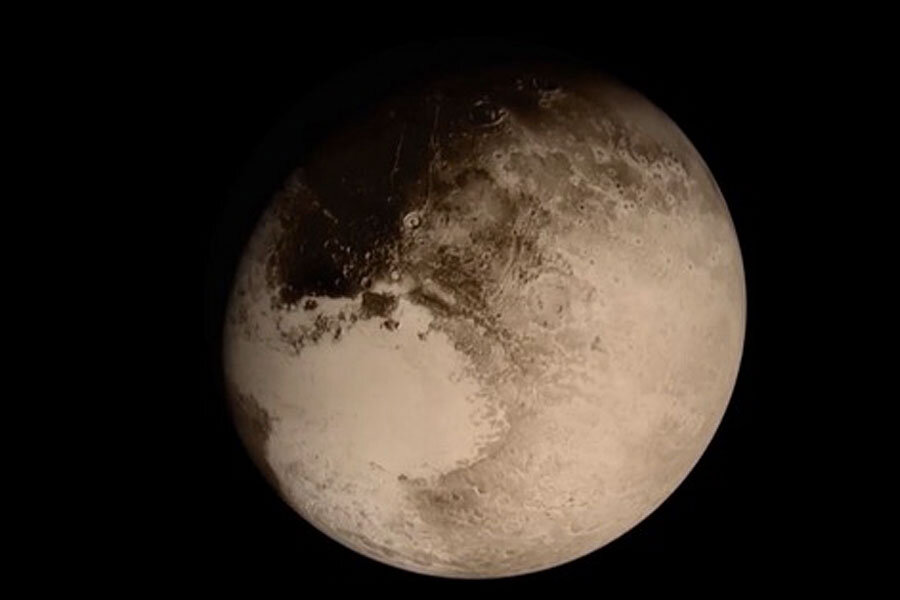More Pluto images on way: 'the best data' still to come
Loading...
Call it "Pluto and Charon: Up Close and Personal," the sequel.
Later this week, mission scientists are expected to publicly unveil the first images in what is expected to be a 15-month flow of data from the New Horizons spacecraft, following its flyby of the Pluto-Charon system July 14.
The sequel actually began to roll Saturday, when New Horizons beamed back the first of what the mission's lead scientist, Alan Stern, has dubbed "the best data" – the most detailed images and spectra, as well as additional data on Pluto's atmosphere and other features of the binary planet system and its moons.
"From the imagery I saw coming down over the weekend, it's really, really spectacular stuff," says Dr. Stern, an associate vice president at the Southwest Research Institute in Boulder, Colo.
The mission's goal is to provide data that yield deeper insights into how Pluto and Charon formed and evolved.
Indeed, Pluto's geological evolution appears to be ongoing.
Shortly after New Horizons buzzed the binary planet and its moons on July 14, it beamed back stunning "first look" images. On Pluto, the images revealed a mountain range rivaling portions of the Rockies and built from blocks of ice. A large expanse of frigid plains, named Sputnik Planum, looks to be geologically young and in at least one region is covered with segments that could point to lava-lamp-like convection beneath the surface.
The science team also found evidence that nitrogen ice may be flowing, glacier-like, around higher terrain where Sputnik Planum borders on uplands.
On Charon, images revealed large impact craters as well as canyons that appear to be among the deepest in the solar system.
Once these initial high-resolution images and some initial spectra reached the ground, however, the team decided to focus on returning data from three instruments whose data sets were far smaller. That transfer of data would take much less time than is the case for the rest of the data.
During the seven weeks that followed, data from a student experiment, the Student Dust Counter, as well as from two instruments that reveal information about Pluto's escaping atmosphere and its interaction with the solar wind, reached Earth.
As with the other data so far, "all went well," says Frances Bagenal, a space physicist at the University of Colorado at Boulder who leads the team that is analyzing the data pertaining to the solar wind and the energetic particles escaping from Pluto's atmosphere.
Dr. Bagenal notes that as the data were coming down, a geophysics journal said "yes" to publishing her analysis that predicted the region around Pluto in which the solar wind and Pluto's atmosphere interacted was fairly large.
But only hours after Bagenal received the "yes," data from New Horizons showed that the interaction region was much smaller than she had predicted.
"That's the way science goes," she quipped in an e-mail.
Now, New Horizons is heading for its next target, an object deeper in the Kuiper Belt, a vast solar-system junkyard that stretches for nearly 2 billion miles beyond Neptune. The object, tagged as 2014 MU69, is a prime target because unlike Pluto, it appears to have formed in its current orbit, nearly a billion miles farther out than Pluto.
New Horizons will set a course for 2014 MU69 via four maneuvers that it will perform in late October and early November, says Stern of the Southwest Research Institute.
Even so, New Horizons' primary mission is over. So planners must ask the National Aeronautics and Space Administration to extend the mission, a proposal that is due at NASA headquarters next year.
The team should have an answer by late next summer, Stern says. By then, the craft will already be one third of the way to the target, which represents a class of objects that the astronomical community in general has been eager to see New Horizons visit.








